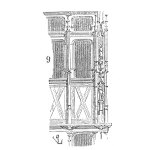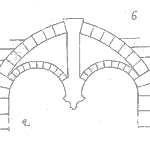
Lets talk about Maintainability!
[Read more…]Your Reliability Engineering Professional Development Site
A listing in reverse chronological order of these article series:
by Ramesh Gulati Leave a Comment
by Mike Sondalini Leave a Comment

ACE 3T analysis is a new problem inquiry tool that lets you find simple answers to difficult problems. It does not ask you to use Lean process assessment tools or apply Six Sigma statistical analysis. You only need to use your eyes and a spread sheet to explore the details that expose the simple options to solve your problem.
by Nancy Regan Leave a Comment

Absolutely not. This is one of the biggest misconceptions of the RCM process. Discover why it is often wrongly believed that RCM is too difficult to implement.
[Read more…]by André-Michel Ferrari 4 Comments

It is becoming more apparent that companies are treating their operational data with the “respect” deserved. About time and if not, then they should start now. Operational Data is typically stored in the CMMS (Computer Maintenance Management System) or historical records repositories.
Data is knowledge. Data is power. Data is the basis of good decision making.
This article also suggests that data could be revenue generator. Therefore, a company’s data is akin to extracting gold from a mine. Like gold, data requires hard work to get and hold on to. Yet, it is highly lucrative when exploited, refined, and traded. The organization running the equipment generates the Operational Data. It can also be generated by a third party. In the following paragraphs, we see the untapped opportunities data and historical records can offer.
[Read more…]by Mike Sondalini Leave a Comment

It’s easy to lose your way in maintenance, reliability and enterprise asset management. Without a vision you are aimless. Without a map you are lost. To get maintenance, reliability and enterprise asset management success you must have both the right vision and the correct path to it.
by Ramesh Gulati Leave a Comment

Spending the right time on the right activity. Today this is all about time management and how to organize and plan your time out. this is a significant skill for more than just one role within the maintenance organization.
[Read more…]by Lindsay Walker Leave a Comment

For many in the maintenance field, the day-to-day tasks can feel routine. Fix a leaky faucet, replace a worn belt, and ensure everything is running smoothly – it’s a process that becomes second nature. But beneath the surface of these seemingly straightforward actions lies a critical component that can safeguard both worker safety and equipment longevity: the MSDS sheet, also known as the Safety Data Sheet (SDS). Let’s learn what does MSDS stand for. [Read more…]
by Mike Sondalini Leave a Comment

The only true way to prevent asset failure is to prevent the causes of microstructure failure from occurring.
Machines fail when their component’s microstructure is degraded or deformed to a point where it can no longer bear the load. If you prevent degradation and deformation from occurring a machine and its components will provide an exceptional lifetime. However, you must do this at every phase of the asset’s life cycle to get world class reliability.
[Read more…]by Mike Sondalini Leave a Comment

In a minute you’ll know if your organisation has what it takes to achieve world class reliability performance. Use this audit tool to gauge your organisation’s capability to deliver outstanding reliability. Use its scale to plan how to improve it.
[Read more…]by Ramesh Gulati Leave a Comment

How do we select the appropriate system? What is the value and why do you need it? George Williams and Ramesh Gulati have it all covered.
[Read more…]by André-Michel Ferrari 6 Comments

Adding equipment redundancy to a system can improve uptime and reliability leading to increased output. When adding new equipment, it is cheaper to evaluate the benefits, or lack of thereof, on paper before implementing the change. Typically done as part of the design phase. However it can also happen after commissioning but its is more expensive. In other words, its better to get it right before “shovels go in the ground”.
[Read more…]by Mike Sondalini Leave a Comment

How the 3T’s of Human Error Prevention and Mistake Proofing – Target, Tolerance, Test – were Discovered
Human errors and mistakes cause 80 percent of industrial equipment failures. That humans cause most problems has long been known. It has been difficult to find reliable ways to prevent human error, but an Arab craftsman taught me the 3Ts of error prevention and mistake proofing work.
[Read more…]by Mike Sondalini Leave a Comment

This job description begins detailing the attributes, skills and knowledge required for a person to competently do the duties of a maintenance planner focused on improving equipment reliability. It uses an outcomes approach to set the standards that must be reached in the performance of the work. It leaves the person doing the job the flexibility and initiative to find their own way to reach those standards.
[Read more…]by Ramesh Gulati Leave a Comment

George Williams and Ramesh Gulati discuss the importance of Reliability Engineers in the work space. -Why is Reliability important? -What does it take to be a Reliability Engineer? -What type of skillsets are needed? -Why is it important to have Reliability Engineers?
[Read more…]by André-Michel Ferrari Leave a Comment

Paul H. Barringer invented the Barringer Process Reliability (BPR) process. Paul was a fellow Reliability Engineer “extraordinaire” and an outstanding mentor for myself and countless others in this field of practice. BPR highlights operational issues. If not addressed or mitigated, those could have significant revenue impacts on an operation. A BPR analysis uses the Weibull probability plot which happens to be a very well-known tool in the field of Reliability Engineering. On one side of a sheet of paper only, the BPR plot can tell the true “story” on the operation. One of those “stories” relates to high impact events best tackled by a Root Cause Analysis.
[Read more…]